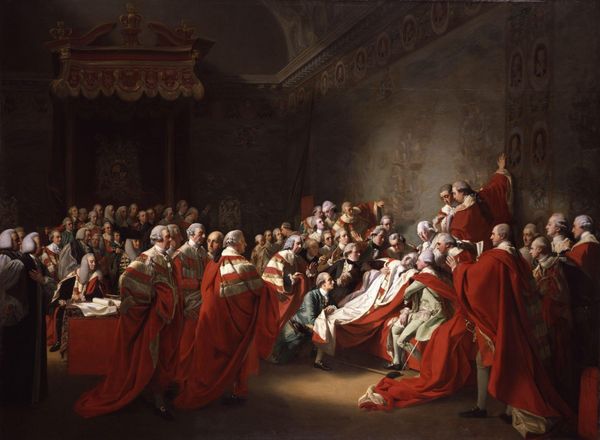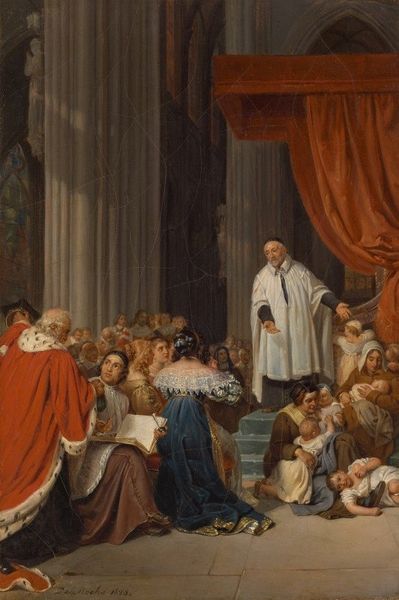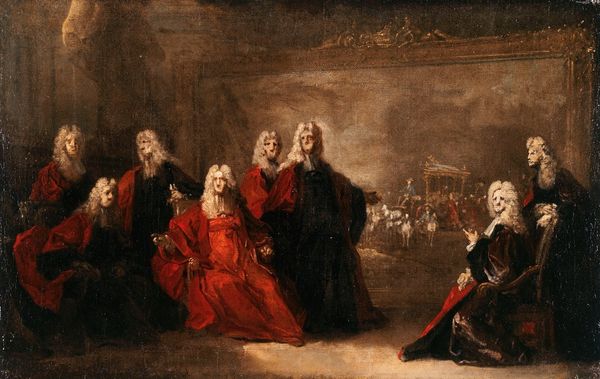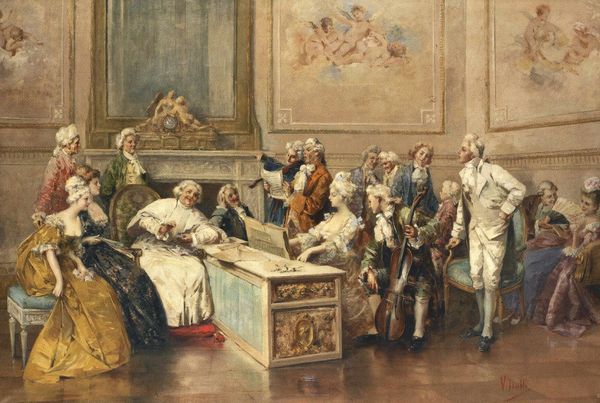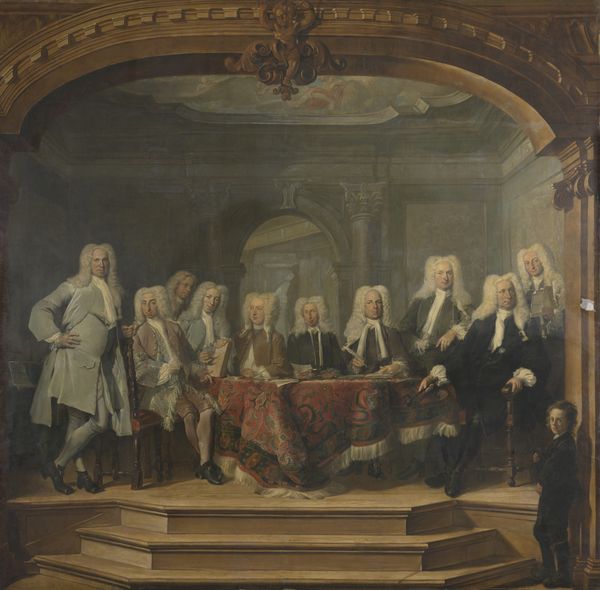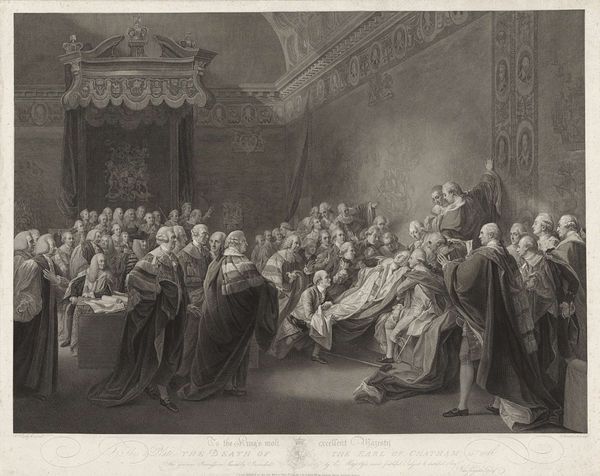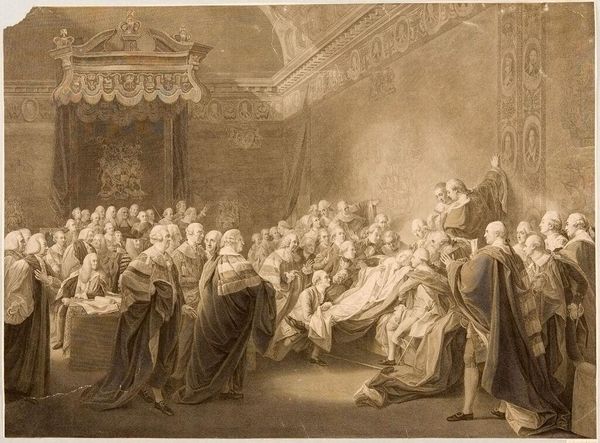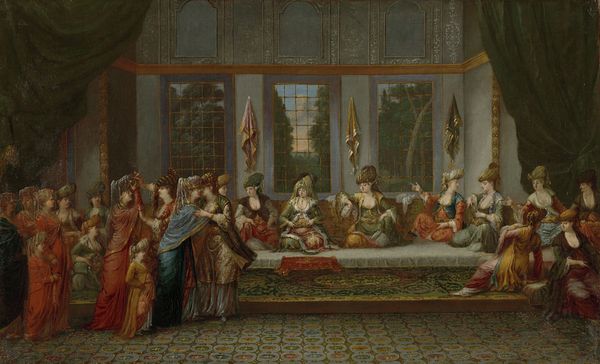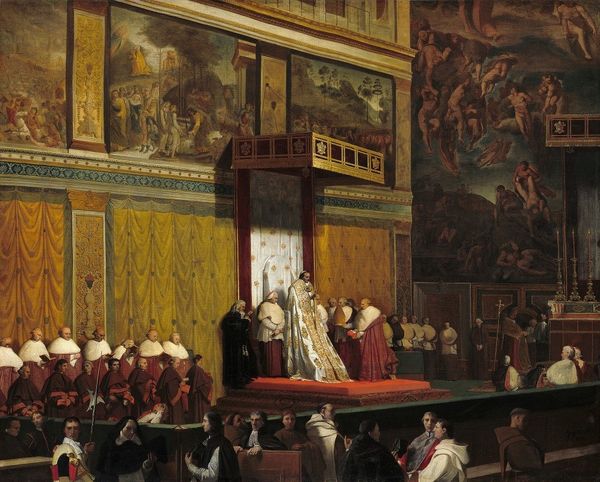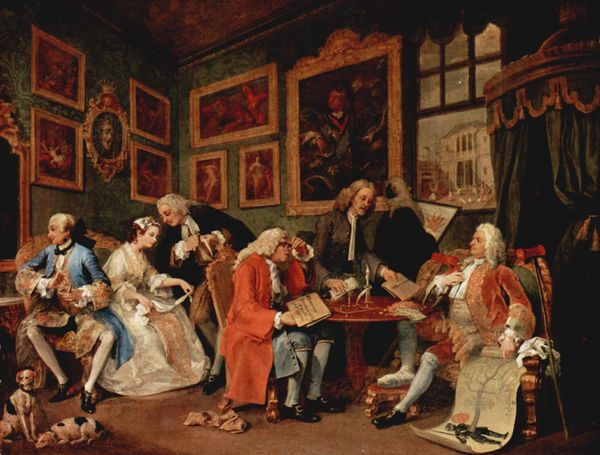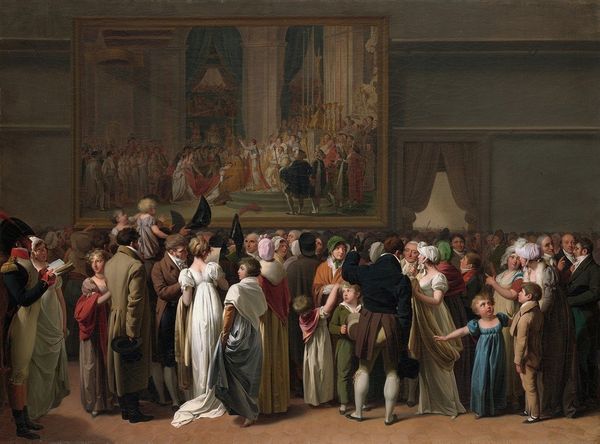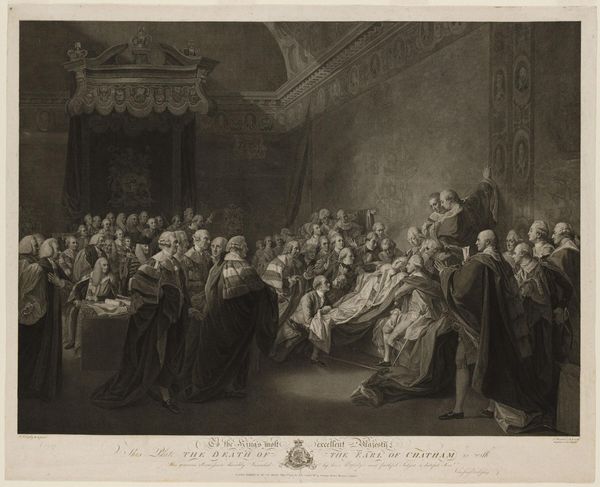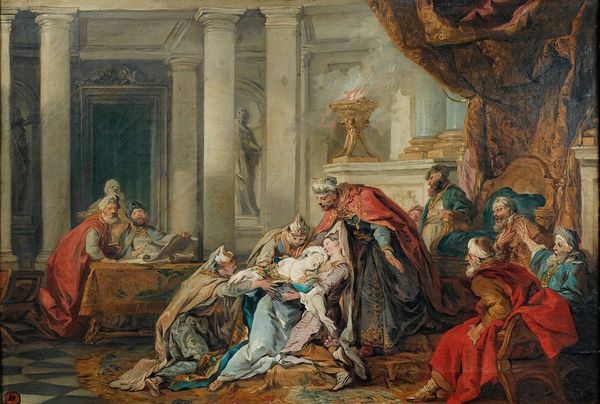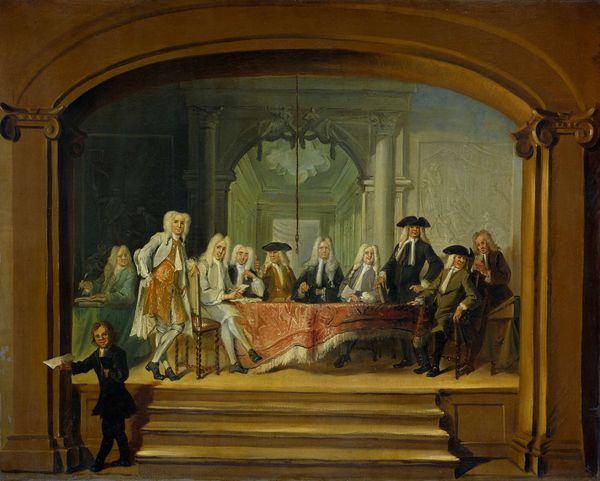
Copyright: Public Domain: Artvee
Curator: Good morning. We're standing before "The Death of Chatham," an oil on canvas painted in 1778 by Benjamin West. This history painting depicts the collapse of William Pitt, 1st Earl of Chatham, while addressing the House of Lords. Editor: It's a theatrical scene, almost operatic. The pallid complexion of the Earl contrasts starkly against the rich, red robes surrounding him. It certainly draws the eye immediately. Curator: Precisely. West strategically places Chatham at the composition's heart, both physically and emotionally. The piece operates within a long-standing tradition of history painting that emphasizes moral lessons and exemplary conduct. The circumstances of his collapse is essential, isn’t it? He was speaking against granting independence to the American colonies when he was struck. Editor: Right, the painting becomes a powerful statement on empire and its discontents. What does it mean to see Chatham depicted this way now? Considering colonial legacies and ongoing struggles for self-determination, does it still serve the purpose for which it was created, the preservation of British rule? Curator: That's a crucial point. The painting originally intended to immortalize a statesman perceived as defending the empire and its power struggles. But, if we consider contemporary theories of representation and power dynamics, West's piece highlights the constructed nature of heroism and how political figures are memorialized, often overlooking the complexities and nuances of their legacies. Editor: I find myself focusing on the reactions of the figures around Chatham, these mostly privileged and powerful men. Are they genuinely grieving, or is their sorrow performative? What does this say about their understanding of power, their place in the world, especially since many directly profited from his ideals? Curator: The institution is definitely a character here. It's staged in the House of Lords after all, and emphasizes a particularly fraught political moment for Britain. It’s impossible not to read those attending as representatives of social institutions, and political ideologies of the period. Editor: Thinking of today’s socio-political climate makes one question whose stories are memorialized in grand historical narratives and whose are marginalized. Are we reinforcing or disrupting those patterns in our museums? Curator: It's definitely something to actively reflect upon as this institution's custodians. A fresh look certainly casts familiar icons into complicated cultural and social artifacts, doesn’t it? Editor: Exactly. It certainly underscores art’s ability to incite debate and shift perceptions, forcing one to acknowledge how legacies are constantly renegotiated. Thank you. Curator: Indeed. It has been enlightening, thank you for offering some fresh considerations on these figures.
Comments
No comments
Be the first to comment and join the conversation on the ultimate creative platform.
